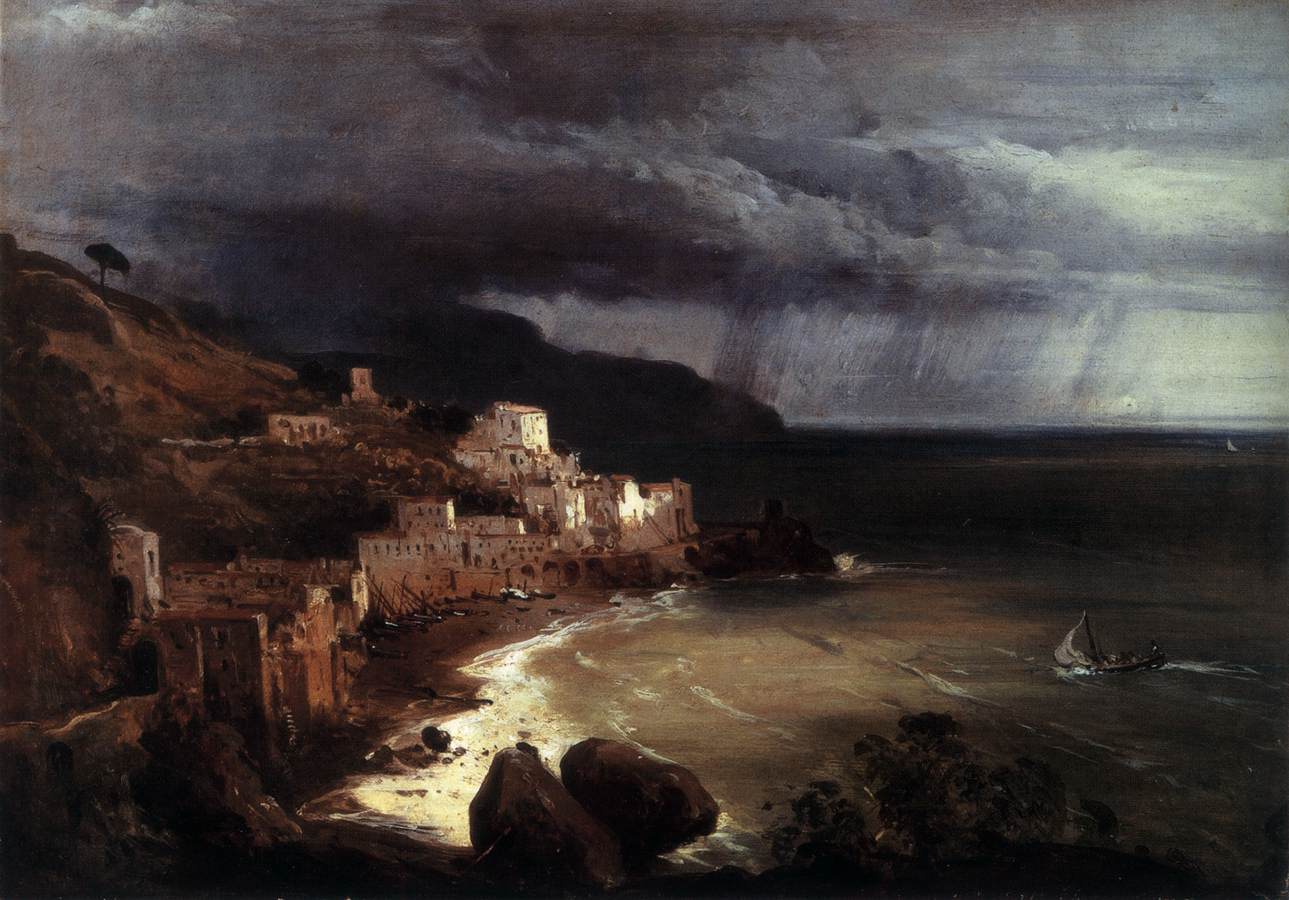Italian painter and printmaker. Born in Naples, he began his apprenticeship around 1818 with his father Gaetano. In 1820, together with Achille Vianelli, he joined the studio of German artist, Jakob Wilhelm Huber (1787-1871), where he began to learn use of the 'camera lucida' to produce panoramic frames around the focal point. In the same period, he was employed by the royal printing office, Real Officio Topografico, where he learned acid etching and lithography techniques. Between 1822 and 1824 he frequented the landscape art school of Pitloo, and became his best student. Pitloo's innovations involved the young Neapolitan artists, those who later became founder members of the Posillipo School. Artists who learned from the maestro a method such as en plein air, the love of research into locations and different panoramic perspectives, the affirmation of a romantic interpretation of a landscape with full freedom of artistic impression. This was the framework common to artists of the Posillipo School, not the theme of their paintings. Unlike the maestro, however, Gigante always moved with respect to the panorama, preferring acid techniques, later lightened with touches of tempera or white lead.
In 1827 he enrolled at the Accademia di Belle Arti and between 1829 and 1832 collaborated with Cuciniello and Bianchi in landscapes of the Viaggio pittorico nel Regno delle Due Sicilie (Pictorial journey through the Kingdom of the Two Sicilies). After establishing a friendship with Russian artist Shchedrin, he obtained numerous commissions between 1835 and 1837 from members of the Russian aristocracy, today held in Russian museums along with recognized preparatory sketches.
In 1848, during the revolutionary uprisings, he escaped from Naples and took refuge in Sorrento, where he dedicated his time to a study of the luxurious coastal vegetation. On his return to Naples, he was appointed chief of design to the princesses of the Royal Court, a post he held until 1855. In the period between 1855 and 1862 he specialized in sepia and watercolour studies of the Pompeian landscapes.
It is mainly in the watercolours that Gigante is at his best, that is using techniques allowing sensations and inspiration to be fixed with great speed and spontaneity. Originally one of his methods, was producing rapid and synthetic watercolour backgrounds, invigorated with touches of white lead, solid and opaque, to create light and effect, whilst after 1860 he concentrated on interiors with figures, especially sacred places. In the latter part of his life he took time to organize his own collection of sketches, acquired on different occasions throughout his career, adding various comments on the locations and artists.
//
![]()


